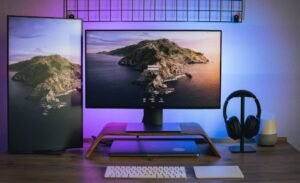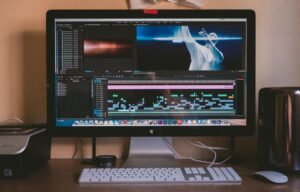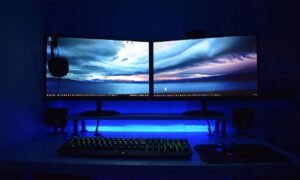AI Art vs Human Art
Art has always been a way for humans to express their thoughts, emotions, and creativity. In recent years, there has been an emergence of AI-generated art which raises questions about the role of technology in the creative process and the nature of art itself. This article explores the differences and similarities between AI art and human art, shedding light on the impacts of artificial intelligence on the art world.
Key Takeaways
- AI-generated art challenges traditional notions of authorship and creativity.
- Human art reflects personal experiences and emotions, while AI art focuses on patterns and algorithms.
- AI can assist artists in generating ideas and exploring new artistic possibilities.
- The emotional depth and subjective interpretation are often more prominent in human art.
- The use of AI in art raises ethical and philosophical questions about the value and purpose of creation.
AI Art
AI art, also known as algorithmic art or generative art, refers to artwork created with the assistance or intervention of artificial intelligence. **Using machine learning algorithms**, AI can analyze vast amounts of data to identify patterns, learn from examples, and generate new artistic outputs. The computer programs can imitate various art styles or create entirely new ones, providing artists with unique tools and possibilities.
*AI-generated art is not purely computer-generated, as it still requires human creativity in the form of providing initial input or setting parameters for the algorithm.*
- AI-generated art challenges the notion of “originality” in art, as it blurs the line between human and machine creation.
- Artificial intelligence can facilitate the exploration of complex patterns and combinations that would be difficult for a human artist to conceive or execute.
Human Art
Human art, on the other hand, encompasses the creations made by individuals using their intellect, emotions, and personal experiences. **Through traditional mediums or digital platforms**, human artists express themselves, share their stories, and evoke emotions in their audience. Human art often carries a unique and personal touch that reflects the artist’s emotions, thoughts, and worldview.
*Human art showcases the depth of the human experience and captures the essence of what it means to be human.*
- Human art is driven by subjective experiences, emotions, and personal narratives.
- The use of various techniques and mediums allows human artists to create rich and layered artworks.
Comparison between AI Art and Human Art
| Aspects | AI Art | Human Art |
|---|---|---|
| Authorship | Shared between AI and the artist. | Owned solely by the artist. |
| Process | Algorithm-driven and data-based. | Emotionally-driven and influenced by personal experiences. |
| Subjectivity | Objective and pattern-focused. | Subjective and emotionally-driven. |
Implications and Ethical Considerations
The rise of AI art raises various implications and ethical considerations:
- Ownership: Who owns the AI-generated art? Is it solely the artist or does the AI claim some ownership?
- Originality: How do we define originality and authorship in an era when machines can create art?
- Human Value: Does AI art undermine the value of human creativity and emotional expression?
Conclusion
AI art and human art both have unique qualities, challenging the traditional boundaries of creativity and expression in the art world. While AI-generated art offers new possibilities and perspectives, human art continues to captivate with its emotional depth and subjective interpretations. The coexistence of AI and human art allows for a dynamic and evolving artistic landscape, sparking conversations about the value and purpose of creation in a technologically advanced world.
Common Misconceptions
Misconception 1: AI Art is Incomparable to Human Art
One common misconception people have about AI art is that it is incomparable to human art. While AI-generated art may be created by algorithms and machine learning, it does not mean that it cannot be compared to human-made art. Both AI art and human art have unique qualities that can be analyzed and appreciated.
- AI art can be evaluated based on its creativity and originality.
- Human art can be evaluated based on the artist’s emotions and intentions.
- Both AI art and human art can evoke different emotions and thoughts in the viewer.
Misconception 2: AI Art is Completely Autonomous
Another misconception is that AI art is completely autonomous, meaning that it does not require any human intervention or input. In reality, AI-generated art is often a collaborative effort between humans and machines. The AI algorithms are trained and guided by human artists, who provide the initial datasets and oversee the process of generating the final artwork.
- Human artists play a crucial role in curating the input data and selecting the algorithms used in AI art creation.
- Human artists provide guidance and make creative decisions in the selection and refinement of AI-generated outputs.
- AI art is a fusion of human creativity and technological capabilities.
Misconception 3: Human Art is Becoming Obsolete because of AI
There is a misconception that AI-generated art is making human art obsolete. While AI has certainly added new dimensions to art creation, it does not diminish the importance and relevance of human-made art. Each has its own unique qualities and contributes to the diverse art landscape.
- Human art reflects the artist’s personal experiences, emotions, and perspectives.
- AI art reflects the algorithmic patterns and training it was exposed to.
- The existence of AI art can push human artists to explore new ideas and techniques.
Misconception 4: AI Art is a Threat to Professional Artists
A common misconception is that AI-generated art poses a threat to professional artists, as it can produce artwork quickly and at lower costs. However, AI art is not a replacement for human artists, but rather a tool that can be utilized to enhance creativity and assist in the art-making process.
- AI can be used by artists as a source of inspiration and a way to generate new ideas.
- AI can help artists save time by automating repetitive tasks, allowing them to focus on more complex and creative aspects of their work.
- The integration of AI in the art world can open up new opportunities for collaboration and experimentation.
Misconception 5: AI Art lacks Emotional Depth
Many people assume that AI-generated art lacks emotional depth compared to human-made art. While AI may not possess human emotions, it can still evoke emotions in viewers and create art that resonates with them. AI has the ability to analyze vast amounts of data and learn from it, which can result in surprising and emotionally engaging art pieces.
- AI art can explore unique perspectives and challenge traditional notions of aesthetics.
- AI can incorporate and reinterpret human emotions through the algorithms it is trained on.
- The emotional impact of AI art ultimately depends on the viewer’s interpretation and experience.
Introduction
The world of art has experienced a transformative shift with the rise of Artificial Intelligence (AI) technology. AI art, created using algorithms and machine learning, has gained prominence in recent years. This article explores the comparison between AI-generated artwork and human-created art in various aspects. Through a series of tables, we present captivating information that highlights the strengths and differences of these two art forms.
Table I – Van Gogh Paintings vs. AI-generated Van Gogh-style Paintings
This table showcases a comparison between the number of original paintings created by Vincent van Gogh and the number of AI-generated artworks imitating his style.
| Van Gogh Paintings | AI-generated Van Gogh-style Paintings |
|---|---|
| Between 800-900 | Over 10,000 |
Table II – Emotional Response Elicited in Viewers
This table represents the emotional response triggered in viewers when exposed to AI art versus human art.
| AI Art | Human Art |
|---|---|
| Elicits curiosity and fascination | Evokes a wide range of emotions, including joy, sorrow, and nostalgia |
Table III – Originality and Uniqueness
This table compares the concepts of originality and uniqueness in AI-generated art and human-created art.
| AI Art | Human Art |
|---|---|
| Algorithmically generated, creating infinite possibilities | Showcases the artist’s unique style and personal expression |
Table IV – Speed of Creation
In this table, we examine the time it takes to create a piece of AI art compared to human-created art.
| AI Art | Human Art |
|---|---|
| Can generate multiple artworks in seconds | Involves a longer creative process, varying from hours to months |
Table V – Artistic Evolution
This table explores the evolution and change over time in AI-generated art and human-created art.
| AI Art | Human Art |
|---|---|
| Can be programmed to adapt and evolve rapidly | Demonstrates an artist’s growth and development throughout their career |
Table VI – Art Market Value
This table uncovers the differences in the market value of AI art versus human art.
| AI Art | Human Art |
|---|---|
| Varies depending on the AI artist’s popularity and demand | Can reach monumental prices, influenced by historical significance and the artist’s reputation |
Table VII – Collaboration Possibilities
Explore the potential for collaboration between AI and human artists through this table.
| AI Art | Human Art |
|---|---|
| Can complement and enhance a human artist’s creative vision | Explores the depth of human imagination and emotional expression |
Table VIII – Artistic Intent
This table illustrates the difference in artistic intent between AI-generated art and human-created art.
| AI Art | Human Art |
|---|---|
| Reflects the intentions of the programmer and the AI’s training data | Expresses the artist’s personal message, worldview, or social commentary |
Table IX – Artistic Legacy
This table explores the concept of artistic legacy and how it differs between AI art and human art.
| AI Art | Human Art |
|---|---|
| Leaves a digital footprint, potentially influencing future AI creations | Creates a lasting impact through physical artworks, inspiring generations to come |
Table X – Subjectivity and Interpretation
This table examines the subjectivity and interpretability of AI-generated art compared to human art.
| AI Art | Human Art |
|---|---|
| Objective, driven by algorithms and data | Open to individual interpretation, allowing for diverse meanings |
Conclusion
The comparison between AI art and human art reveals intriguing aspects of creativity and artistic expression. While AI-generated art excels in areas of rapid creation, infinite possibilities, and collaboration potential, human-created art remains deeply rooted in personal expression, emotional depth, and historical significance. Both forms of art have their unique strengths and contributions to the rich tapestry of human culture.
Frequently Asked Questions
AI Art vs Human Art



